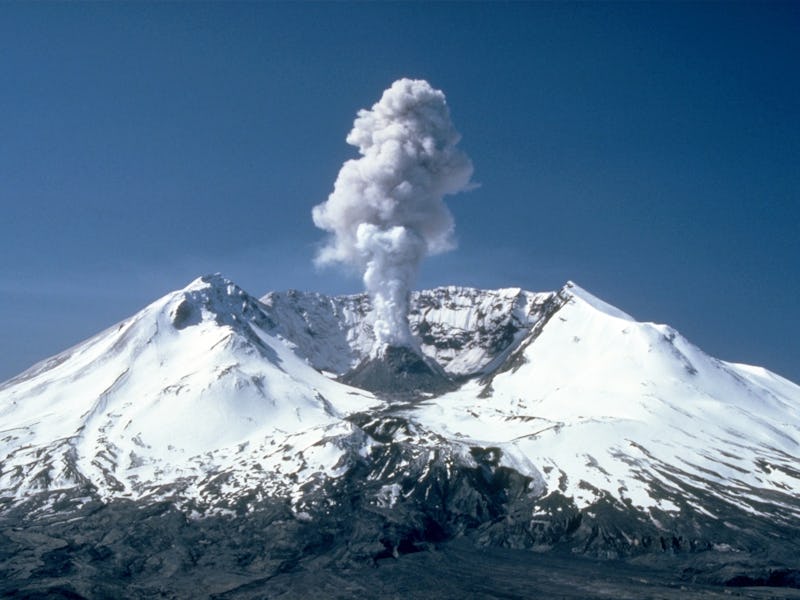There's Something Not Quite Right About Mount St. Helens
New research deepens the mystery of how this volcano gets its fire.

A team of researchers has come to a surprising conclusion: Mount St. Helens, the most deadly volcano in the United States, has a cold, dead heart.
The Washington State volcano is infamous for an eruption in 1980 that killed 57 people and levelled hundreds of square miles with landslides and magma flow. It’s still considered active today, but the source of its fire remains a strange mystery.
The first clue that Mount St. Helens is a bit of an odd duck is its location. It’s about 30 miles west of the main axis of the Cascade Volcanic Arc, a series of volcanoes running from British Columbia to California and related to the subduction of the Explorer, Juan de Fuca, and Gorda tectonic plates under the North American plate.
Obviously, Mount St. Helens must source it magma from somewhere, but this new evidence suggests that that somewhere is not below the volcano itself. The researchers conducted a high-resolution survey by deploying 900 seismographs within 10 miles of the volcano summit. They set off 23 explosions, each as intense as a 2.0 magnitude earthquake, in order to listen to their vibrations with the sensors. This is all part of an ambitious underground mapping project called Imaging Magma Under St. Helens, or iMUSH.
Mount St. Helens is out of step with other volcanoes in the Cascade Arc.
The results of the survey led the team to the conclusion that directly underneath the great volcano is not hot magma but a wedge of mantle made of serpentinite — rocks formed in a low-temperature transformation through the addition of water.
The research, published Tuesday in Nature Communications, suggests that the magma that feeds Mount St. Helens’ fire is likely sourced to the east, near Mount Adams, then piped to the mouth through a “deep magmatic plumbing system.”
The infrastructure of this subterranean plumbing remains largely a mystery, but this research paper is just the beginning.
“It is important to note that we have just finished collecting all of the different types of geophysical data associated with the iMUSH experiment and that these data will provide important additional constraints on the deep structure at Mount St. Helens,” said lead author Steven Hansen, a postdoctoral volcanologist at the University of New Mexico, in a release.